Expansion set 'Sagrada Life' and 'Sagrada Passion' play review that adds new game characteristics to 'Sagrada'

The competitive puzzle game '
Sagrada Life Japanese Version --Engames Shop
https://www.engames-s.com/product/1091
Sagrada Passion Japanese Version --Engames Shop
https://www.engames-s.com/product/968
The package of Sagrada Life looks like this.
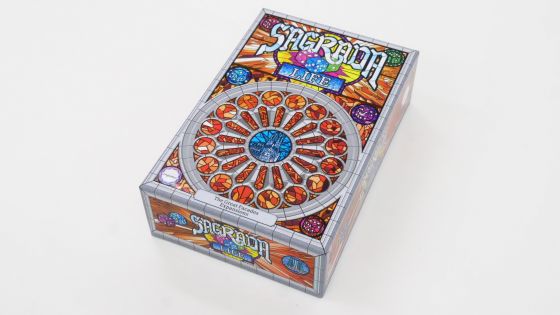
Sagrada Life supports 1 to 4 players, the estimated play time is 30 to 45 minutes, and the target age is 13 years old or older.
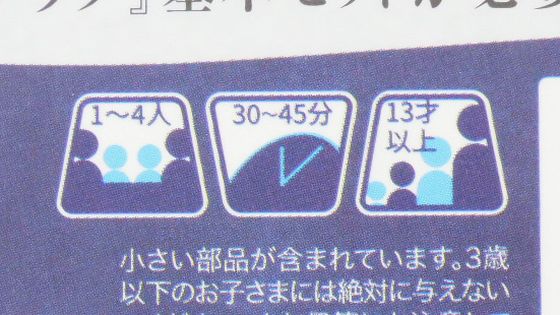
Inside the box are new dice, 'Masterpiece Dice' and 'Masterpiece Dice Board'.
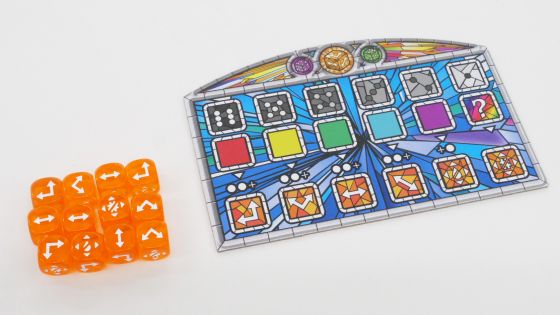
Masterpiece dice can be placed on the window sill player board as 'orange' dice, which are different from the usual five-color dice. The masterpiece dice are marked with arrows of various shapes instead of dice, and if you arrange the dice according to the conditions of the arrows, you can get 5 points when calculating the score. For example, in the case of a masterpiece dice with the following arrows, you can get points by placing 'same color' or 'same eye' dice on both sides.
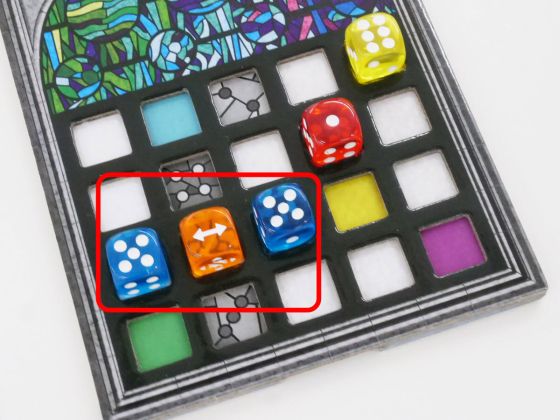
In addition, a 'disciple card' and a new 'window pattern card' that exert various effects when used are also included.
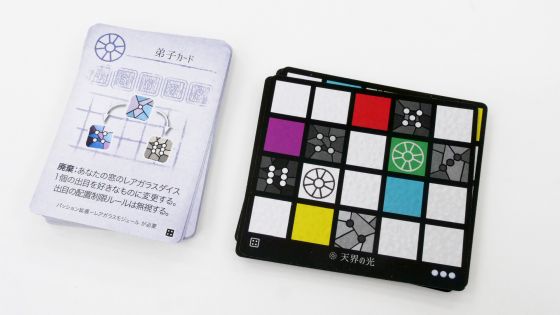
Disciple cards include cards that are effective during play, such as 'swap the positions of the dice placed on the window frame player board' and 'get two grace tokens', and 'deductions due to the empty space on the window frame player board when calculating the score'. There are 22 types of effects, such as cards that are effective when calculating points, such as 'does not occur'.
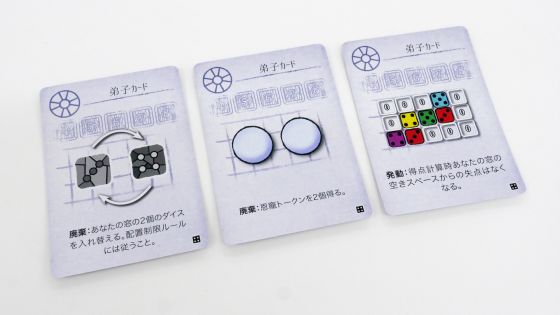
In addition, there was a new 'tool card' and an 'advanced common goal card' with more complicated achievement conditions than the normal common goal card.
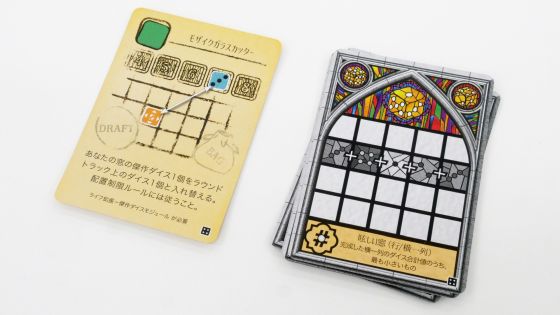
If you want to play a combination of regular Sagrada and Sagrada Life, you need to put a masterpiece dice board on top of the round track. In addition, line up the 6 masterpiece dice along the arrow at the bottom of the masterpiece dice board, and place the extra masterpiece dice nearby.
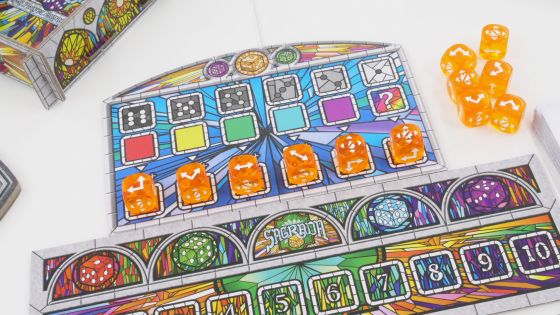
Next, place the disciple card next to the round track with the back side up, flip the top disciple card and discard it, and you're ready to go.

The rules such as the number of common goal cards and tool cards are the same as normal Sagrada, so if you understand the rules of Sagrada, you can enjoy the game immediately.

Masterpiece dice can be used by placing regular dice on the masterpiece dice board instead of placing them on the window frame player board during the turn. The dice placed on the masterpiece dice board must match the color or roll on the top of the masterpiece dice you want to use. This time, I put the blue dice on the masterpiece dice board to use the red-framed masterpiece dice.
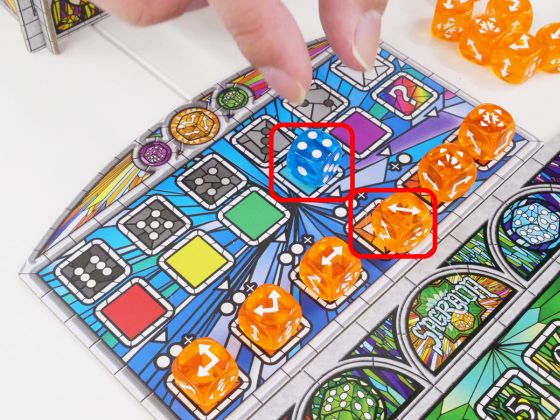
Masterpiece dies can be placed ignoring the roll restrictions on the window sill player board. However, you must follow color constraints and other dice placement rules.
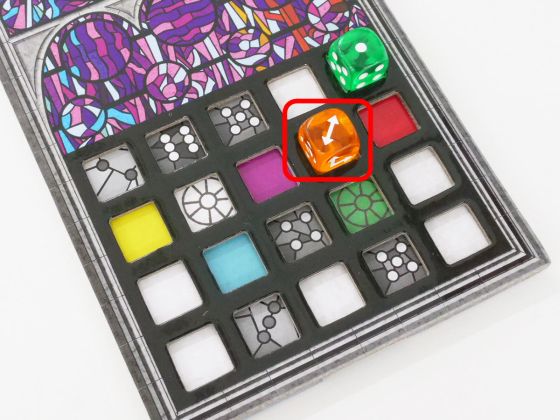
In addition, when you receive the masterpiece dice, you can receive as many grace tokens as the number of white circles on the masterpiece dice board. I received two grace tokens because there were two white circles on the top of the masterpiece dice I received this time.
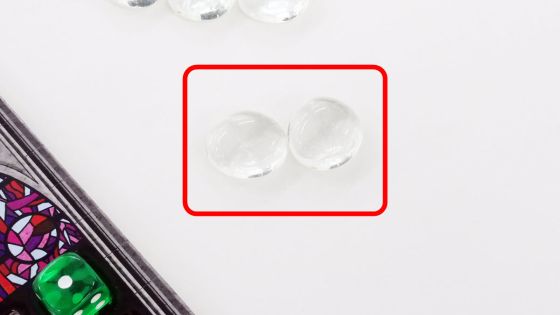
When the player receives the masterpiece dice, replenish the masterpiece dice with the same side facing.

The window pattern card that comes with Sagrada Life has a square with a round pattern. The player who puts the dice on this square can receive one disciple card.
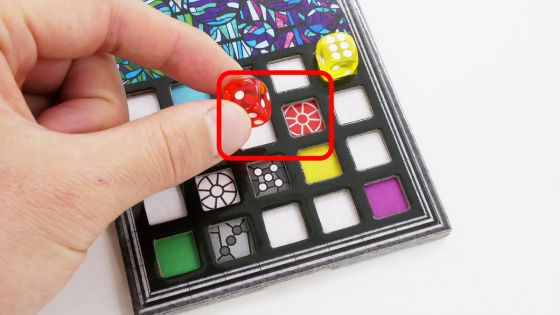
There are two ways to receive a disciple card. One is to draw two disciple cards from the face-down deck, select one of them, and discard the unselected disciple card in the discard pile.
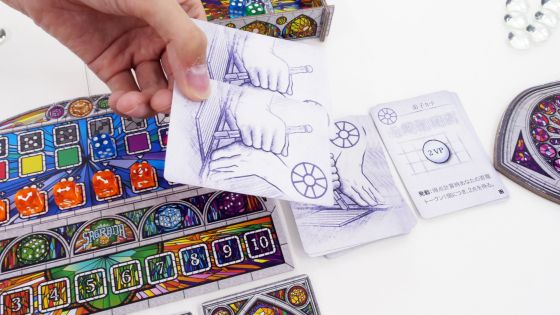
The other is to receive the disciple card at the top of the discard pile.
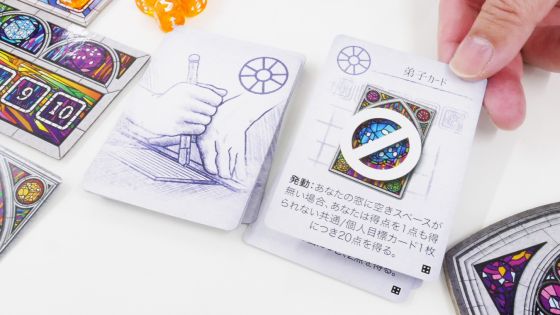
Place the received disciple card face down near you. You can use the received disciple card at any time of your turn.
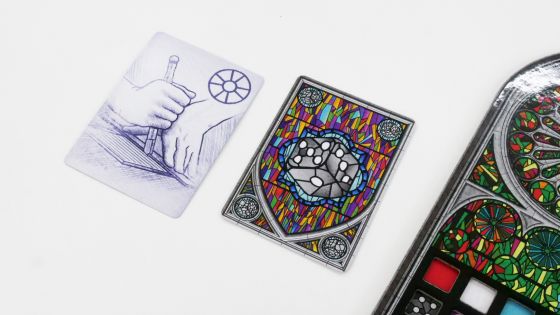
As the game progressed, the dice that couldn't be placed on the window frame player board came around in my turn. If nothing is done, empty space will remain on the window frame player board and points will be deducted.
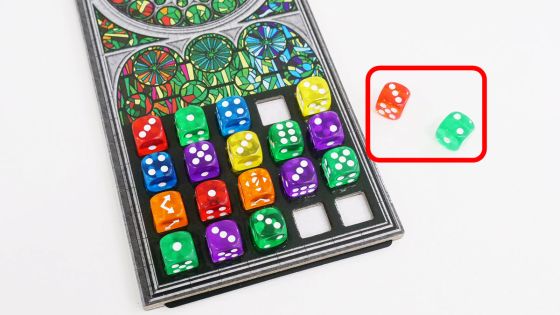
To overcome this situation, use a disciple card that has the effect of 'increasing or decreasing the number of dice on the window frame player board by 1.'
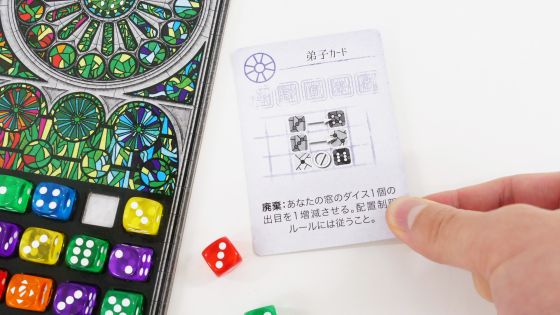
Increase the number of yellow dice from 3 to 4 by the effect of the disciple card ...
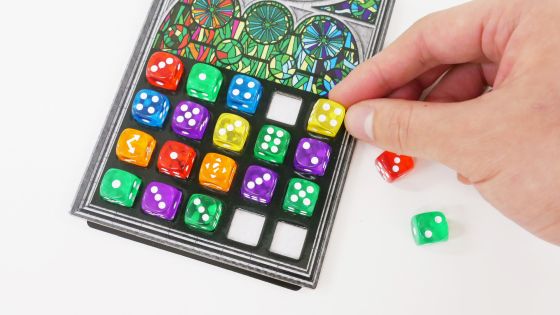
I was able to avoid deductions by placing the red dice on the window sill player board.
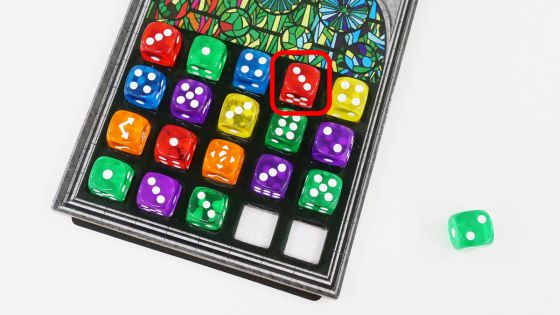
There are also disciple cards that are effective when calculating the score after the game is over. For example, this player was able to score an additional 4 points with a disciple card that had the effect of 'increasing the score scored by the masterpiece dice by 2 points'. Even if the card is effective at the end of the game, you need to 'activate' the effect by using the disciple card in your turn during gameplay.
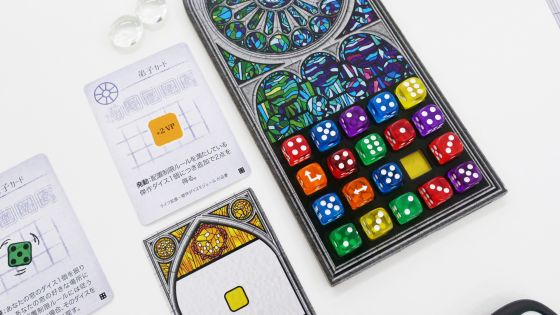
The player who won this game got 22 points by the advanced common goal card '2 points for each die with the same color and roll' added in Sagrada Life. The conditions for the advanced common goal card are high in difficulty to achieve, but you can also get a high score by actively aiming.
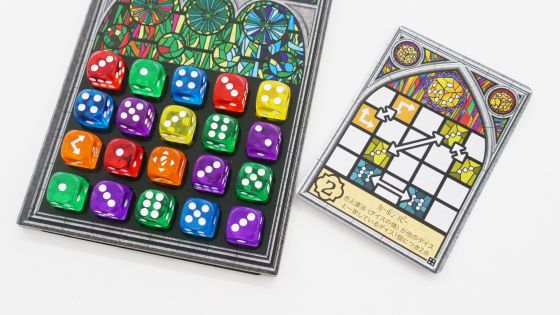
When I actually played Sagrada Life, it was necessary to think carefully about the placement of the dice compared to normal Sagrada due to masterpiece dice and advanced common goal cards, and the battlefield changed due to the effect of the disciple card. I was able to enjoy a higher level of fun as both a puzzle game and a party game. Also, since the rules are not much different from normal Sagrada, it is also attractive that you can enjoy new game characteristics immediately after opening.
Next, let's play Sagrada Passion.
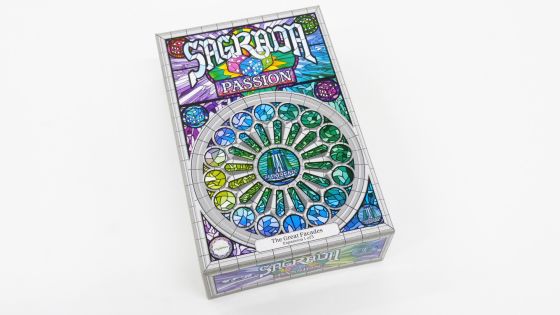
The number of players is 1 to 4, the play time is 30 to 45 minutes, and the target age is 13 years old or older.

Inside the box are 'Inspiration' that gives players special abilities, 'Rare Glass Dice' for new dice, and 'Rare Glass Board' for placing rare glass dice.

The inspiration card has various effects such as 'wisdom' which has the effect of 'using a tool card with one grace token' and 'luck' which has the effect of 'rerolling the dice once per round'. Types are available.
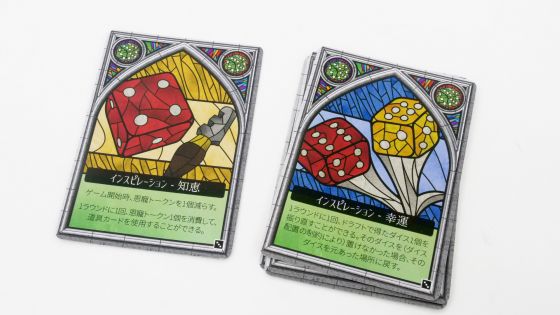
The rare glass board describes the number of grace tokens required to obtain rare glass and the conditions for placing rare glass, and you can place the rare glass dice perfectly in the square frame at the top.

Some rare glass boards can hold three rare glasses at the same time.

In addition, there are new goal cards such as 'Symmetry Common Goal Card' and 'Rare Glass Individual Goal Card' in the box.
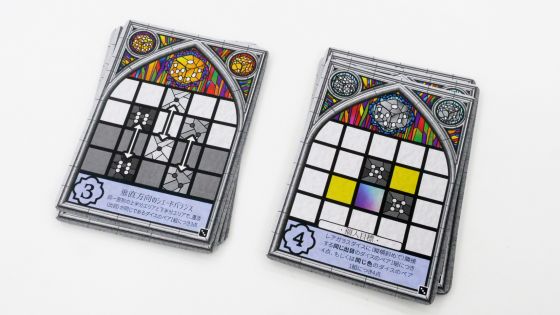
The symmetry common target card is '3 points for each set of dies with the same roll in the upper and lower halves of the same row' and '3 points for each set of dies of the same color in the horizontal mirror position'. The goal that emphasizes symmetry such as 'point' is written.
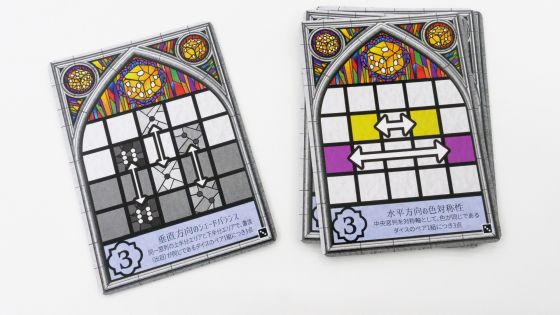
The rare glass individual target card includes 'total value of 1, 2, 3, and 4 dice placed around the rare glass dice' and 'maximum value of each color among the dice placed around the rare glass dice.' The conditions for getting points related to rare glass such as 'total value of' are described.
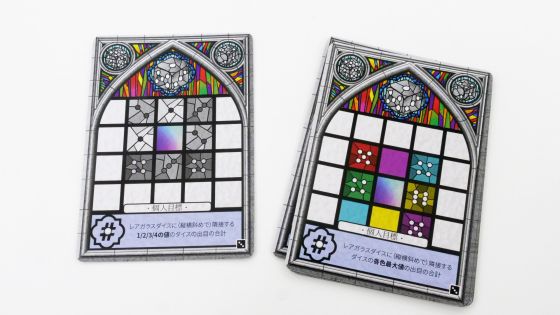
When playing with a combination of regular Sagrada and Sagrada Passion, select and place one rare glass board in the center of the field.
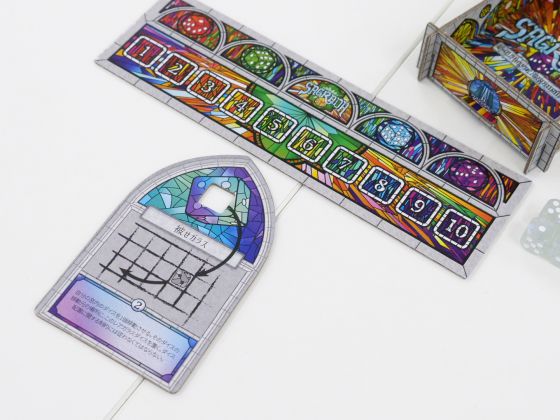
Next, roll the rare glass dice and place it on the frame of the rare glass board.
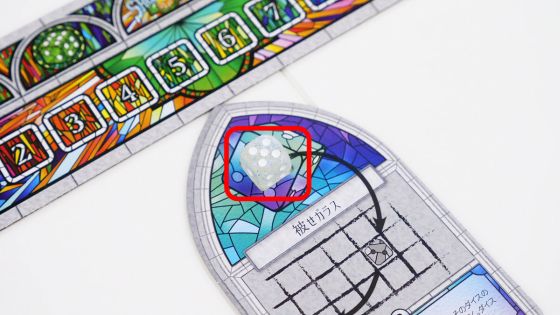
After placing the rare glass board, place 2 tool cards and 3 common target cards.
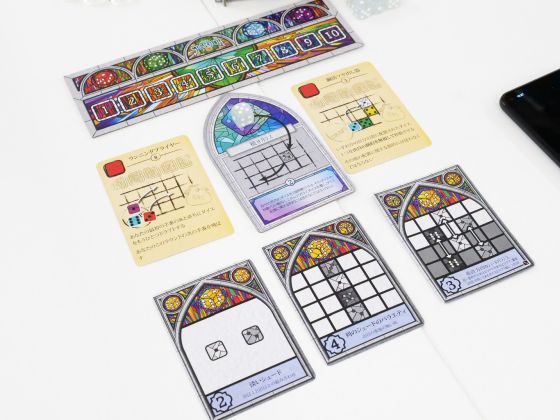
Finally, give the player a window frame player board, a window pattern card, a personal goal card, a grace token, and an inspiration card, and you're ready to go. The inspiration card must be face up.
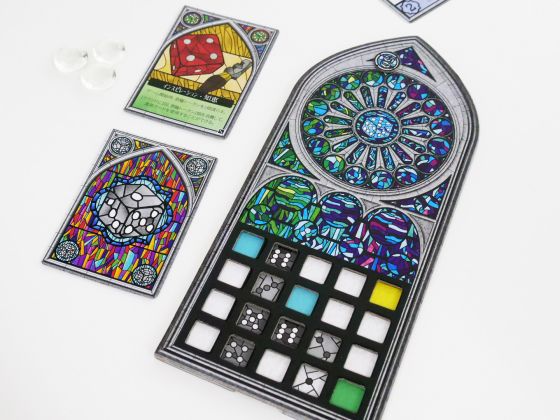
The basic rules, such as the number of dice and the order of turns, are the same as for regular Sagrada.
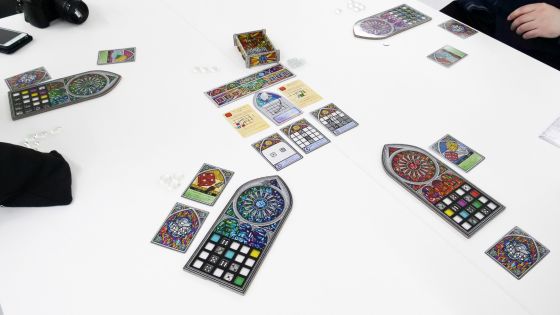
Rare glass dies can be used by fulfilling the conditions marked on the rare glass board in your turn and paying a grace token. The condition written on the rare glass board this time is 'Move one die of the window frame player board and place the glass die at the source of the die'.

So, move the purple dice ...

I placed the glass dice in the original position of the purple dice. Rare glass dies can be placed ignoring color constraints, but you must follow roll constraints and other placement rules.

Shake a new rare glass die on the rare glass board. Players can only use one rare glass die per game.
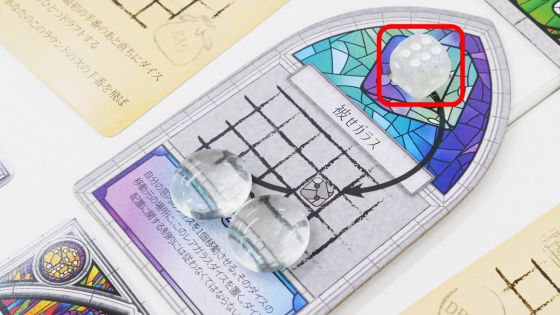
You can use the inspiration card at any time of your turn. In addition to the cards that can be used many times during the game, some of the inspiration cards ...
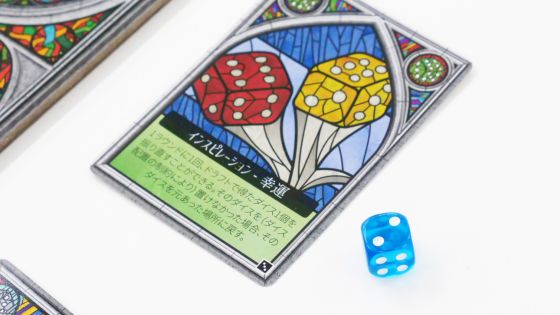
Instead of being able to use it only once per game, there are also cards such as 'Impact' that have the effect of 'getting up to 3 grace tokens'. You need to think of different strategies depending on the effect of the inspiration cards dealt at the beginning of the game.
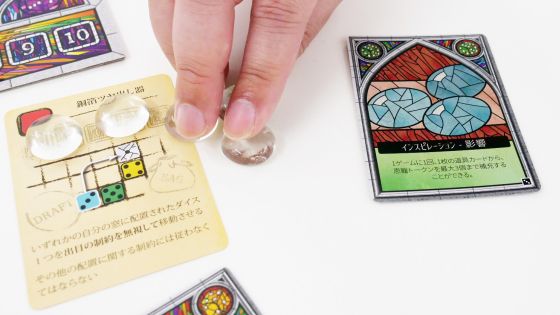
In addition, some rare glass personal goal cards added by Sagrada Passion can aim for a large number of points depending on the conditions. For example, in this game, the player who had the rare glass individual goal card 'Get the total points of the dice that spread diagonally from the rare glass dice' got 35 points and won.

The elements related to rare glass dice added by Sagrada Passion strengthen the strategic elements of Sagrada, and require strategic play with the head compared to normal Sagrada. In addition, you need to think of strategies that match the inspiration cards that are dealt, so you can enjoy fresh fun every time you play. Also, as with Sagrada Life, you can easily get started if you understand the rules of normal Sagrada, so it is recommended for players who want to enjoy more strategic games than normal Sagrada.
In addition, Sagrada Passion is available on Amazon.co.jp for 2750 yen at the time of article creation.
Amazon | Sagrada Passion Japanese Version | Board Games | Toys
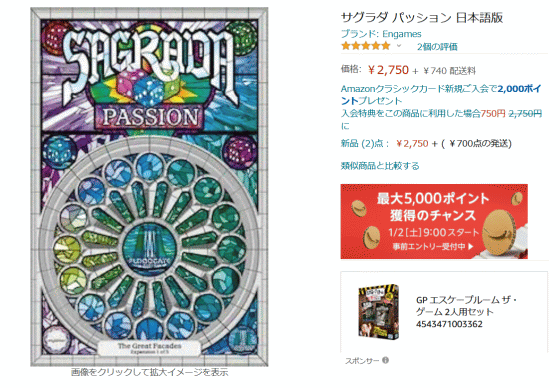
Related Posts:







